-
Posts
1,774 -
Joined
-
Last visited
-
Days Won
6
Content Type
Profiles
Forums
Blogs
Gallery
Events
Store
Posts posted by azyeoman
-
-
A fantastic and scarce/rare addition to the First World War section of the collection. Although scarce, medals to PoWs from Kut are on the market, but others, such as this one for the “Second Action of Es Salt” are rare and very desirable.
Great War Honorable Artillery Company Palestine Second action of Es Salt Casualty and Prisoner of War group
1914-15 Star – 894. Gnr. H.G. Loynes. H.A.C.
BWM – 894 Bmbr. H.G. Loynes. H.A.C. – ART.
Victory – 894 Bmbr. H.G. Loynes. H.A.C. – ART.Herbert George Loynes came from Norwich, Norfolk, and originally enlisted on 19th April 1914 as a Gunner (No.894 later No.624309) into the Honorable Artillery Company - Artillery. Loynes saw service in Egypt from 13th November 1915 as a member of “I” Troop “A” Horse Battery, and fought in Palestine, being a Bombardier and Acting Sergeant when he was wounded and taken prisoner of war by the Turkish Forces on 1st May 1918 during operations in the Jordan Valley when caught up the in the German counter-attack in the aftermath of his participation in the Es Salt Raid, which is a known at the Second Action of Es Salt or the Second Battle of the Jordan. Acting Sgt. Herbert George Loynes, HAC was interned in Afion KaraHissar.
With:
Great War period single dog tag, stamped: ‘624309 H.G. LOYNES HAC A CE’
Great War period brass Honorable Artillery Company other ranks cap badge, version with revolving wheel.
Pair of Great War period brass ‘HAC-A’ (Honorable Artillery Company - Artillery) shoulder titles.
Pair of Great War period brass ‘HAC’ (Honorable Artillery Company) shoulder titles.
Pair of Gunner’s sleeve badges.
Great War period Gunner’s cloth sleeve badge.
Pair of Honorable Artillery Company tunic brass ball buttons.
Pair of Honorable Artillery Company tunic brass buttons.
Honorable Artillery Company veteran’s blazer badge, wire embroidered form.
The Honourable Artillery Company (HAC) was incorporated by royal charter in 1537 by King Henry VII. The HAC regiment is the second-oldest military corps in the world. The word "artillery" in "Honourable Artillery Company" does not have the current meaning that is generally associated with it, but dates from a time when in the English language that word meant any projectile, including for example arrows shot from a bow. The equivalent form of words in modern English would be either "Honourable Infantry Company" or "Honourable Military Company".
In World War I, the HAC expanded to three infantry battalions and seven artillery In total 1,650 men from the HAC were killed during the war. A Battery, HAC was posted to Egypt in 1915, served as part of the Western Frontier Force in the Senussi Campaign in 1916 and the the Sinai and Palestine Campaign with the Imperial (later Australian) Mounted Division in 1917 and 1918. Both A and B Batteries were in action at the First and Second Battles of Gaza and entered Jerusalem in December 1917. In the German counter-attack during the Second Action of Es Salt on 1 May 1918, A Battery was forced to make a rapid withdrawal under heavy fire, which resulted in the loss of all its guns. Both A and B Batteries took part in the Battle of Megiddo in September.
Specifically, Gnr/Bmbr Herbert George Loynes’ 1/A Battery, HAC, the 1st Line battery was embodied with the London Mounted Brigade on 4 August 1914 at the outbreak of the First World and concentrated in Berkshire. A decision was made to form a new mounted division from the mounted brigades in and around the Churn area of Berkshire. On 2 September 1914, 2nd Mounted Division, with headquarters at Goring, came into being and London Mounted Brigade was assigned to the new division. I and II Brigades, RHA (T.F.) were formed for the division and the battery was assigned to II Brigade, RHA at Churn, along with B Battery HAC, and the Berkshire and Nottinghamshire Batteries RHA. In November 1914, the division moved to Norfolk on coastal defense duties. Artillery headquarters was established at Cromer, before joining the divisional headquarters at Hanworth in December, and A Battery, HAC was at Mundesley.
Overseas service
In March 1915, the 2nd Mounted Division was put on warning for overseas service. In early April, the division starting leaving Avonmouth and the last elements landed at Alexandria before the end of the month. By the middle of May, the horse artillery batteries were near Ismailia on Suez Canal defenses.
Although, the 2nd Mounted Division was dismounted in August 1915 and served at Gallipoli. The artillery batteries and ammunition columns along with the signal troops, mobile veterinary sections, Mounted Brigade Transport and Supply Columns and two of the Field Ambulances were left behind in Egypt. The division returned from Gallipoli in December 1915 and was reformed and remounted.The battery rejoined the division on 13 December, but on 20 December it entrained at Alexandria for the Western Desert, concentrating at Mersa Matruh on 7 January 1916. Thereafter, it served as part of the Western Frontier Force in the Senussi Campaign, and taking part in the Affair at Halazin on 23 January 1916. The battery returned to Alexandria on 6 March and was rearmed with four 18 pounders. Then it returned to the Suez Canal Defenses on 6 April, and joined the Australian 4th Light Horse when it was reformed in February 1917. It remained attached to the 4th ALH Brigade for the rest of the war.
Imperial Mounted Division
The Imperial Mounted Division was formed in Egypt in January 1917; 4th Light Horse Brigade was one of the four cavalry brigades selected to form the division. A Battery, HAC joined the division on formation and was assigned to XIX Brigade, RHA (T.F0, but the battery actually remained attached to 4th ALH Brigade.
The battery, and its brigade, served with the Imperial Mounted Division in the Sinai and Palestine Campaign as part of the Desert Column. With the division, it took part in the advance across the Sinai including the First (26 – 27 March 1917) and Second Battles of Gaza (17 – 19 April 1917).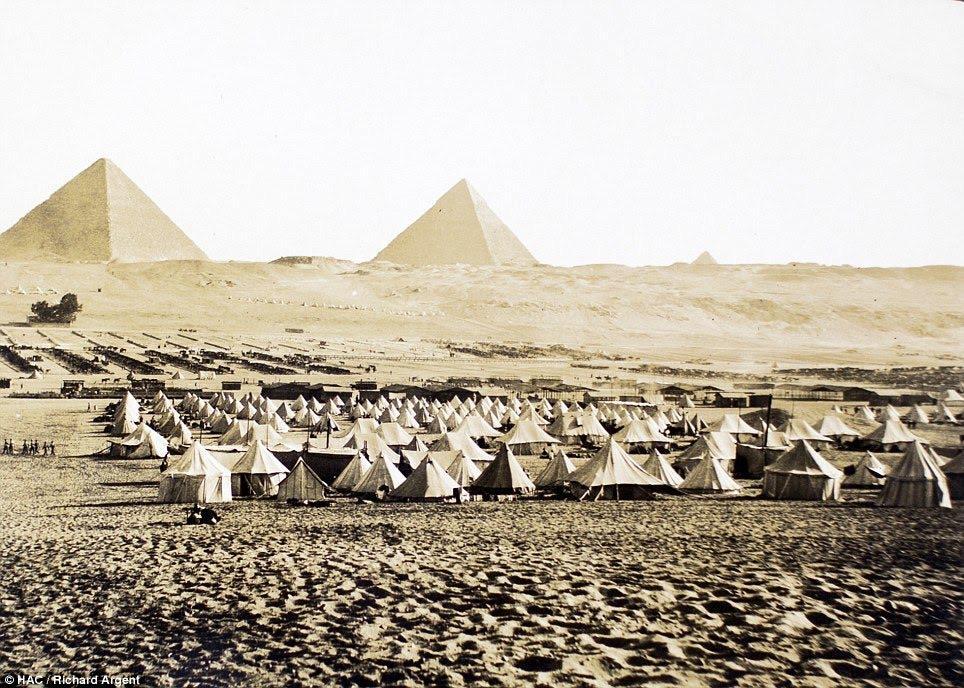
HAC Camp outside of Cairo
Australian Mounted Division
In June 1917, the Desert Column was reorganized from two mounted divisions of four brigades each to three mounted divisions of three brigades each (ANZAC, the Imperial Mounted Division renamed, and the new Yeomanry Mounted Division. On 20 June 1917, the Imperial Mounted Division was redesignated the Australian Mounted Division as the majority of its troops were Australian. On 12 August 1917, the Desert Column disappeared and the Desert Mounted Corps was formed.
The battery served with the Australian Mounted Division throughout the rest of the Sinai and Palestine Campaign. As part of the Desert Mounted Corps, the division took part in the Third Battle of Gaza, and in particular the Capture of Beersheba on 31 October, and the Battle of Mughar Ridge on 13 and 14 November, and the defense of Jerusalem against the Turkish counter-attacks from 27 November – 3 December.
Still part of the Desert Mounted Corps, the division took part in the Second Trans-Jordan Raid from 30 April – 4 May 1918. XIX Brigade, RHA supported the 4th Light Horse Brigade in the advance on the Jisr ed Damiye-Es Salt track on 30 April. The next day, a strong Turkish force attacked from the direction of Jisr ed Damiye and soon the artillery was in danger. B Battery, HAC was in the rear and managed to get away with all but one of their guns, stuck in a wadi, but the Nottinghamshire RHA and A Battery, HAC were less fortunate. Machine gun fire cut down the horse teams before the guns could be gotten away. This is where Bmbr Loynes was captured. XIX Brigade lost 9 guns in total, the only guns to be lost in action in the entire campaign. Its final action was the capture of Damascus on 1 October. After the Armistice of Mudros, the division was withdrawn to Egypt and started to demobilize. The last of the Australians returned home in April and May 1919. A Battery, HAC were reduced to cadre in Egypt on 25 October 1919.

Gunners of A Battery, the Honorable Artillery Company, attached to the 4th Australian Light Horse Brigade, crouch between their 13-pounder quick fire field guns and a cactus hedge near Belah, Palestine, in March 1918.
Overview - summary
Es Salt, a village in Palestine 23 km west of Amman, was the scene of heavy fighting between 30 April and 3 May 1918. The fighting occurred as part of the second "raid" mounted east of the Jordan River by General Sir Edmund Allenby's Egyptian Expeditionary Force. The actual raiding troops - the Australian Mounted, ANZAC Mounted, and British 60th Infantry Divisions, and the Imperial Camel Corps Brigade - were commanded by Lieutenant General Sir Harry Chauvel and their aim was to secure a launching point for operations against the key railway junction at Deraa. The operation progressed well initially with Es Salt being seized by the evening of 30 April. Increasingly determined Turkish resistance, including counter-attacks that threatened the flanks and rear of the advanced elements of the raiding force, eventually forced a withdrawal back to the Jordan on 3 May 1918. The raid failed in its objectives but did serve a purpose in that it encouraged Turkish commanders to believe Allenby's next major effort would be launched across the Jordan, when in fact it would be launched along the coastal plain.Map of the Es Salt battlefield
Battle on 1 May 1918
After a 75 minutes-long bombardment at 05:30 the infantry launched fresh attacks on the same objectives as the previous day. By 10:00 Chauvel was urging the 60th (London) Division to press its attack with additional forces; infantry from the 20th Indian Brigade was sent forward and the Canterbury Mounted Rifles Regiment (New Zealand Mounted Rifles Brigade) were sent to reinforce infantry in the 179th Brigade. These attacks were halted 20 minutes later after gaining ground which would form a favorable base from which to launch further offensives. A company of the 2/18th Battalion London Regiment captured two sangars and a few prisoners on tel Buleibil; this being the only success of the day.The 60th (London) Division fought hard to capture the position at Shunet Nimrin but without success; every attack ran into heavy enfiladed machine gun fire from positions which were so successfully concealed that they could not be found by the infantry's supporting artillery. The fire from the German and Ottoman machine guns was so effectively directed and concentrated on the edge of scrub, which gave cover for the British infantry approach but did not extend to the foot of the hills, that these machine guns defeated all infantry efforts to cross the open ground.
The Beni Sakhr had been asked to cut the road through Ain es Sir from Amman, which had been upgraded to allow a smooth flow of troops and supplies. The Beni Sakhr had failed to cut the road and towards evening German and Ottoman reinforcements from Amman which had moved along this road, began to reinforce Shunet Nimrin. Having seen the difficulties suffered by infantry from the 60th (London) Division the Beni Sakhr had already dispersed; playing no part in the fighting.
German and Ottoman attack in the Jordan Valley
After the first Transjordan attack on Amman, the Ottoman 4th Army east of the Jordan River had been reinforced by the 3rd Cavalry Division, the Caucasus Cavalry Brigade, a Circassian Cavalry Regiment and the German 146th Regiment which was stationed in the northern Jordan Valley, with the 24th Division also in the area.Two hours after the 60th (London) Division renewed its attack on Shunet Nimrin, at about 07:30 the northern flank guard provided by the 4th Light Horse Brigade (commanded by Brigadier General William Grant) was suddenly threatened by the Ottoman 24th Infantry Division less the 2nd Regiment and the German 146th Infantry Regiment which had crossed the Jordan River unseen during the night. This strong Ottoman force advanced from the broken ground east of the Jordan, in open order with their right flank directed on the gap between the left of the 4th Light Horse Brigade and Red Hill. They advanced in two waves; the first, estimated by the commander of the 4th Light Horse Brigade at 4,000 Ottoman soldiers and the second, at 1,500 soldiers. These figures have been disputed; "independent Turkish and German accounts" claim 1,750 formed the first wave (the Ottoman 143rd Infantry Regiment, a storm battalion with one German company in reserve or two German companies and a German machine gun company), while the second wave was made up of three or four regiments (two regiments from the Ottoman 3rd Cavalry Division with one or two regiments from the Caucasus Cavalry Brigade).
The Ottoman attacking force emerged from cover, from the direction of Jisr ed Damieh and moved quickly against the light horse on 1,000 yards (910 m) wide front. At the same time the Ottoman 3rd Cavalry Division appeared further north and moved into the foothills towards the light horse's right. While the attackers moved over open ground the three batteries of IXX Brigade RHA, Australian Mounted Division opened a rapid and accurate fire on the advancing soldiers. These guns continued firing on the strong attacking force while at the same time being heavily shelled by German, Austrian and Ottoman batteries from the west bank of the Jordan.
The attack proceeded very rapidly; soon enemy forces on the right overlapped the light horse's left in the valley and forces on their left quickly turned the light horse's northern flank in the foothills requiring a hasty withdrawal. The 4th Light Horse Brigade was being attacked from three directions; from the Nahr ez Zerka on the light horse's right and from Jisr ed Damieh in the center. A third group, the 2nd Regiment had crossed the Jordan at the lower bridge at Mafid Jozele north of Red Hill but the Ottoman Seventh Army ordered it back to the Jisr ed Damieh crossing.
The main attack was towards that part of the line held by the 4th and 12th Light Horse Regiments which was forced back until they were facing due west, with their backs to the tangled maze of, for cavalry and guns, impassable rocky hills. The 4th Light Horse Regiment supported by ‘A’ Battery HAC on the right or northern flank, had held their position until the attackers closed to within 200 yards (180 m) when they began their slow withdrawal into the hills. The Nottinghamshire Battery RHA was positioned near the center of the brigade but each time an attack broke and melted away before the light horse fire from rifles and the guns, the German and Ottoman dead lay a little closer to the guns of these two batteries. Each time a short retirement was made, the heavy pressure of the attackers pushed the guns further into the hills and each time there were fewer men and horses to move the guns. They were forced into a position from which there was no escape fighting till all their ammunition was exhausted and the German and Ottoman attackers were within 200–300 yards (180–270 m) on three sides. Then the teams of horses were killed by machine gun fire and the nine 13–pounder guns were abandoned while the remaining men and horses scrambled up the hills to the east and succeeded in reaching the Wadi el Retem just to the north of the Umm esh Shert track. While the dismounted light horse could retire east into the hills if necessary, the three batteries of artillery now had no apparent way out to the east or south. The 4th Light Horse Brigade's guns had been pushed back into gullies, from where they had to move almost due west before they could turn south down the valley; "B" Battery on the left or southern side managed to get away with the loss of one gun. However, "A" Battery HAC and the Nottinghamshire Battery, RHA could not be moved as their teams of horses had been shot. After firing these guns to the last moment, they were abandoned. The gunners removed the breech-blocks and sights and did as much damage as was possible in a few minutes while the brigade withdrew slowly firing as it went, up the slopes of the range to a position to which the horses had already been taken. It may have been possible to concentrate on the hills above the guns and keep the attackers away from the guns for some hours but it could have cost the whole brigade. Meanwhile the 11th Light Horse Regiment on the left of the line, managed to withdraw down the valley with "B" Battery, two light horse regiments were forced eastward deep into the foothills to make a difficult withdrawal through rocky gullies and over craggy spurs.
Loynes and other POWs were held at Afion KaraHissar, which appears to be an anglicized version of the Turkish town where they were held captive.
From early 1915, Afion was used as a prison camp, both officers and men being kept in houses, rather than in a proper camp with barbed wire around it. The first prisoners there were Russians, mainly officers from merchant ships seized in Turkish harbors at the very beginning of the war. They were joined in early 1915 by officers and men from the French navy, survivors of the submarine Saphir.
From late April onwards, there was a small but steady flow of sailors and soldiers captured during the Gallipoli Campaign. These included the crews of the British submarines E-15 and E-7, the Australian sub AE2, the French subs Mariotte and Turquoise and officers and men From the British, French New Zealand and Australian armies. Later, there were some prisoner captured at Kut in Iraq sent to the camp and other officers captured in Egypt, Syria and Jordan.
From about mid 1916 onwards, the town was mainly used as a camp for officers, most of the other ranks being transferred to the south to work on the construction of the railway in the Toros Mountains, though some worked in Istanbul, Sivas, Ankara, Nusaybin, and other locations. However, some remained to act as batmen, or officers servants. Some of these men were considered too weak, due to wounds or illness, to work on the railway or elsewhere.
Some of the guards at the camp were from the Turkish navy, including some officers from the Mesudiye, sunk in December 1914 near Canakkale. Other guards were reservists, men considered too old to serve at the front.
Treatment of prisoners at Afion varied. It has to be said that one camp commander, in the latter part of the war, was hated by the prisoners as he physically and sexually abused men, and was known to arrange to have their Red Cross parcels stolen, selling the contents in shops in the town. At the insistence of the British, this officer was court marshaled after the war by the Ottoman government, but unfortunately later released due to geopolitical concerns.
Below: Afion Karahissir
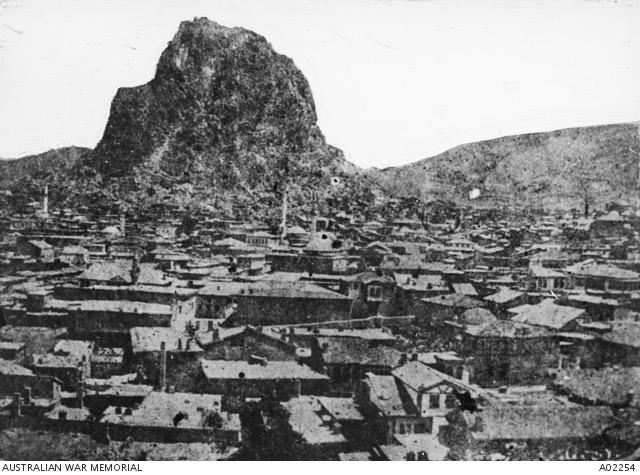 0
0 -
Thanks For posting this. I like how you have framed it. Is that a regimental button on the left side?
0 -
If you are interested in a new trench watch, Vario makes ones that look great and you can even get a shrapnel guard! They are very reasonably priced too.
0 -
I’m bumping this is the hope that Freiwillige has new items to post. What an interesting collection. Thanks for sharing!
0 -
I recently acquired a death plaque group that had had Velcro attached to the reverses of the medals and plaque in order to display them. The dealer from whom I purchased the group removed the Velcro, but there is a sticky residue remaining and I would like to know what suggestions anyone has for removing it and not damaging the metal nor changing the original color, which is essential to me. Thank you in advance for your kind assistance. John
0 -
Excellent research on a man who deserves to never be forgotten; capture, death marches, a hell ship and possibly dying alone all horrible experiences for a fine young soldier fighting for the free world. This emotive group is a good addition to your collection. Thank you for posting it
0 -
Thank you. It’s so nice having a photo to go along with the medals and biographical details.
0 -
-
Hi Tony,
Thank you for responding; I really appreciate it. You may very well be correct and as of now, it appears to be the best option. Initially, I thought it might have been something from a shipping company like P&O, but there RC makes sense. Perhaps these ribbons were worn somewhere on a MN uniform; although I’ve yet to ever see that. I wonder if the RC has its own uniforms; it certainly liked medals and date bars as you’ve noted. Thanks again. John
1 -
Nursing Sister Elizabeth (Lilly) White Gray RRC was born on 30 June 1868, her father, Henry, was 44, and her mother, Sarah Jane (nee McClinton), was 38. She had four brothers and four sisters. She died on 19 October 1938, in Gravesend, Kent at the age of 70. When she was born, the family lived in Broughton, Lancashire (1871 census).
Her eldest sister Sarah Ann who was born in 1856 died in 1889 in in Chorlton, Lancs. Her elder sister, Mary Jane who was born in 1857 died on 22 March 1902 in Kingston Upon Thames, Middlesex. Her brother John who was born in 1861, died on 22 October 1925, in West Kirby, Cheshire (3 Townfield Rd., West Kirby, Wirral, Cheshire). Her sister Henrietta (Ettie) who was born in 1864 died on 5 May 5 1928, in Surrey. Her brother, Henry Stuart (09/1872 – 1948) who later lived in Greater Manchester, Lancs. Her Father died in Bangor, Down, Northern Ireland at 59 years old in 1883 and her mother Sarah Jane passed away in 1922 in Manchester, Lancashire at the age of 92.
Lilly was a nurse and qualified at the Royal Hospital, Salford. On 7 May 1897, she joined the Princess Christian’s Nursing Service Reserve, and her personnel number was 555. (AO 365). In July 1901 she was at No. 5 General Hospital Wynberg, S. Africa and in September 1901 she was at No. 12 General Hospital in Springfontein, S. Africa (A1598). She later served at No. 13 General Hospital, Wynberg, S Africa (AO 365). She is listed on the QSA Medal roll dated September 1901 in Springfontein (TNA WO100/229 pp.45, 79 and 163) and on the KSA Medal Roll (TNA WO100/353 p.28). There were on 587 KSAs awarded to nurses. QSA and KSA are both officially named to Nursing Sister E Gray (not officially re-impressed as often found). Sister Gray is also on the War Office Nominal Roll of Princess Christian’s Army Nursing Service (Reserve) for 30th September.
The 1911 census shows that Lilly, as a single 42-year old head of the house, was living in Kingston Upon Thames, Surrey with her 80-year old mother Sarah Jane Gray and a single 42-year old servant, Mary Ann Shaw, who is the domestic general servant. Lilly’s occupation is “Hospital Nurse & Masseuse, QANR”.
Her address was Broomlace, Latchmere Rd. Kingston Upon Thames, a house with seven (7) rooms.In WWI, Matron Elizabeth Gray was in the Territorial Force Nursing Service / Queen Alexandra's Imperial Nursing Service. Her start date was 1 January 1914 and her end date was 31 December 1920. (WO 399/23277) She was entitled to a BWM, Victory and TFWM. She arrived in France & Flanders on 29/05/1917 (WO372/23) She was also decorated by the King at Buckingham Palace with the Royal Red Cross (1st Class) on 27 June 1916. It was gazetted on 3 June 1916. (5602).
If anyone knows where her BWM, Vic and TFWM along with her RRC are located, please contact me as I would like to reunite her medals.
Elizabeth (Lilly) White Gray died on October 19, 1938, in the Gravesend and North Kent Hospital in Gravesend when she was 70 years old. She was living at 1 the Drive, Hill Side Old Road, East Gravesend, Kent. There is a probate record dated 20 December 1938.in which she left L1,360. 6s 2p to her spinster sister Margret Gray. She was interned in consecrated ground C 4735 on 22 October 1938 at the Kingston cemetery.
For more information on the QAIMNSR see: https://boerwarnurses.com/boer-war-nurses-database/
Sister & Matron Elizabeth (Lilly) White Gray
2 -
I recently acquired these as a lot. It's obvious that the three ribbon bar (pin back) consists of the BWM, MMWM and Victory Medal for World War I service. But, what I'm not familiar with are the two red and white ribbons bars (sewn on) with 1940-41 and 1941-42 respectively embroidered on them. Any help in identifying these and who would wear them and wear on the uniform would be greatly appreciated. They came together and I assume that someone from the Merchant Navy also served in WWII. Thanks very much in advance, John
1 -
A nice little group. I’ve not seen the Harrow medal before; it’s quite elaborate. It’s always great to put a face to a name! It’s too bad here wasn’t able to escape.
1 -
A lovely medal; what does the locomotive on the ribbon signify? Thanks, JL
0 -
Hi Rob,
Great research on another escaper group. I look forward to your next post.
john1 -
-
A very welcome addition of a rare QSA with two clasps to a corporal in the Farmer's Guards.
QSA with OFS and SA01 officially named to: 33 Cpl. J. T. Smidt, Farmer's Guards.
Confirmed as having served in A Troop (W)100/247)
The Farmer’s Guard (formerly known as the Burgher Police) was formed in November 1901 from surrendered burghers who had to enlist for a 3-month period for of 5/- per day. They were responsible defending the property and cattle as well as for the safety of surrendered burghers who were farming in the so-called “protected area” of more than 30 km radius surrounding Bloemfontein. Their reported strength was 600 and they commanding officer was Major E M Morris. The majority of the men came from the vicinity of Bloemfontein as well as the Southern and Eastern Free State. By Feb 1902 the radius of the area had been increased to some 65 km. The outposts were spaced at 9 km intervals on the perimeter and were manned by groups of 5-10 guards.
0 -
Q.S.A. single clasp Talana. One of only 18 to the regiment and of 533 total single Talana-clasp QSAs.
5106 Pte. S.J. Jackson, 1 Leics. Regt.
Taken prisoner at Talana
Samuel Charles Jackson,a laborer, born in Sheffield in1879 and resided there too. He was the son of James of 26 Orton St. in Derby and had two brothers. He enlisted on 12/10/1897 in Leicester when 18 years and two months old. He was transferred to the 1st Bn. On 13/05/1899 when the regiment left for S. Africa. He was in S. Africa until 06/06/1900 (one year and twenty-five days) It is noted that he was missing after the Battle of Dundee (Talana) from the 20th to the 26th of October 1899. The roll confirms the single clasp, Talana. His service papers note that he was missing at the action and later released. He was returned home 7/6/1900, and was discharged on 27/02/1914.
Jackson S C 5106 Private 1st Btn. Missing - released at Dundee. 26 Oct 1899.
Source: Natal Field Force Casualty Roll, page 73 line 9
Jackson S C 1st Battalion, Volunteer Service Company
Source: QSA and KSA medal rolls
Jackson S E 5106 Private 1st Btn. Missing - released at Dundee. 26 Oct 1899.
Source: Natal Field Force Casualty Roll, page 71 line 10
Jackson Samuel C 5106 Private QSA (1) QSA known to exist
Source: List of QSAs with the clasp Talana from the Talana bookThe 1st Battalion was stationed at Glencoe, in the north of Natal, when the war broke out. It thus formed part of the brigade of General Penn Symons, the other battalions being the 1st King's Royal Rifles, 1st Royal Irish Fusiliers, and 2nd Dublin Fusiliers. There were also at Glencoe the 18th Hussars and the 13th, 67th, and 69th Batteries RFA.
Actual fighting commenced at 3.20 am on the morning of 20th October, when a Mounted Infantry picquet of the Dublin Fusiliers was fired on and driven in. At 5.50 am the enemy occupied Talana Hill with artillery, and commenced shelling the camp. The troops were soon set in motion. To the Leicesters and 67th Battery was assigned the duty of guarding the camp with its great quantities of stores. The general decided to attack with his other infantry and artillery. These moved away and were soon in extended order advancing to a wood, which the commander had decided to use as a breathing place. The wood was gained between 7 and 8 am, the 13th and 69th Batteries meanwhile keeping up a heavy and accurate fire on the enemy's positions. About 8.50 the infantry again advanced, and as they left the wood had to face a terrible rifle-fire both from their front and flank. Sir W Penn-Symons, who had been exposing himself with rash bravery, fell mortally wounded about 9.30; Brigadier General Yule, now in command, directed the infantry to move to a wall stretching some distance along the hillside, from which wall a very heavy fire was being kept up by the Boers. The two batteries redoubled their efforts. The 1st King's Royal Rifles on the right first reached the wall, followed by some companies of the Irish Fusiliers; the Dublin Fusiliers also made their way up a little later. After another breathing space under cover of the wall the troops jumped the wall and scrambled up the steep face. At 1 pm the crest was gained and the enemy fled. Then followed the first blackguardly use of the white flag. Within easy range of our artillery were to be seen "clumps of 50 and 100 men on which guns could have inflicted great loss. The enemy, however, displayed a white flag, although they do not appear to have had any intention of surrendering, and in consequence the officer commanding Royal Artillery refrained from firing". One can scarcely acquit this officer from being very easily taken in, as the enemy's continued movement contradicted any idea of surrender.
The infantry had done magnificently; the same cannot be said of the Hussars, or at least those under Colonel Moller, who managed to get lost among the enemy, and was taken prisoner with 200 men. The artillery did well, but it seems beyond doubt that they fired at the hill-top after it was occupied by our people, causing some loss, particularly to the King's Royal Rifles. The range was short, and artillery officers with proper glasses should have seen when the British troops were up. The Leicesters lost 1 officer killed, 1 wounded, and 1 man wounded.
On the 21st General Yule moved his camp to a better position. On the 22nd he resolved to retreat on Ladysmith. At nine at night in silence, without bands or pipers, the force set out by the east or Helpmakaar road, the dying general, the other wounded, and the doctors being left. A great mass of stores had also to be left to the enemy, as its destruction would have made him suspect the intended retreat; while, on the other hand, a twelve hours' start was absolutely necessary. To have fought their way to Ladysmith would have been an impossible task for Yule's column in that hilly country. As it was, the Boers showed that inexplicable want of energy which seemed at times in the campaign to paralyse them. Probably the good things left in Dundee had something to do with the lack of activity. Fortunate it was that General Yule was not interfered with by the enemy, but the elements were not favourable. The rain at times fell in torrents; roads knee-deep in mud and swollen spruits made marching very heavy work, while but little sleep was obtainable between the 21st and 26th.For more information on the battle: https://www.britishbattles.com/great-boer-war/battle-of-talana-hill/
0 -
On 17/06/2016 at 19:23, Gunner 1 said:
Rob: He was a Lieutenant at the time of his capture. On 29 October 1899 two battalions of infantry and the 10th Mountain Battery were ordered to seize Nicholson's Nek, six miles north of Ladysmith, and to cover Sir George White’s left while his main body attacked Long Hill. Marching through the night the infantry were scrambling up the steep side of Nicholson’s Nek in the darkness when something caused the mules of the infantry transport to stampede. The mules rushed down through the infantry and the panic spread through the mules of the mountain battery who ran away carrying the mountain guns, artillery ammunition and the reserves of rifle ammunition, along with the heliograph used to communicate with the main column. As for No. 10 Mountain Battery, RGA, its commander, all three subalterns and 84 men were taken prisoner by the Boers, but were released after a few days.
This is a very nice group! It's just the sort I would enjoy in my Boer War PoW collection. Congrats and thanks for posting photo and research.
0 -
Wow Mike,
That's a spectacular group and I can see why it's your best and favorite. I look forward to your posting on the Colonel who was staff for Allenby and Lawrence; I suspect that might end up being your favorite. ; )
Cheers,
John
0 -
Hi Mike,
Great collection. How's your roll of existing Canadian Scout QSAs for the Boer War going? I hope well. Are you going to do the same with the any other units?
0 -
Hi Christophe,
Although it resembles a RN LSGC, the white stripes are too narrow and that ribbon is not watered. I don’t think it’s British. All the best, J
0 -
The pair to Sivil is exceptionally nice. Thanks for sharing!
0 -
This is a very interesting group to a 1919 recipient of the OBE for war services regarding his repatriation of British PoWs from Rotterdam and Belgian refugees from Hull.
The group consists of an OBE (type I, civil) with the reverse hallmarked 1919, a BWM and Mercantile Marine Medal officially named to Leonard D Pinckney.
Pinckney's OBE was noted in the London Gazette of 26 of March 1920 under the King has been graciously pleased to give orders for the following promotions in, and appointments to, the Most Excellent Order of the British Empire for services in connection with the War, to be dated 1st January, 1920:— Captain Leonard Durnford Pinckney. Master, SS Khyber.
Captain Leonard Pinckney received his early training in Conway and in due course entered the P & O Service. In August 1914 he commanded the Somali, and was engaged in the trooping service to and from India and Gallipoli.
The P&O steamship SS Somali was built in 1901 by Caird & Co of Greenock, Scotland. She acted as a Hospital ship conveying wounded Australians at Gallipoli during WW1. Later the Somali was equipped as a hospital ship and then he conveyed wounded from Gallipoli to Malta and Alexandria. She was broken up in Denmark in 1923
.jpg.b889fb7b4feab528f3fb30d8da7ad05a.jpg)
SS Somali
Later, while in command of SS Khyber after the armistice, Capt. Pinckney did eminent service in connection with the repatriation of prisoners of war from Rotterdam and Belgian refugees from Hull. SS Khyber was owned by the Peninsular & Oriental Steam Navigation Company (P&O Line) and used on the India/Far East service where she conveyed Australian troops home after WW1. She was sold to Japan as scrap in 1931.
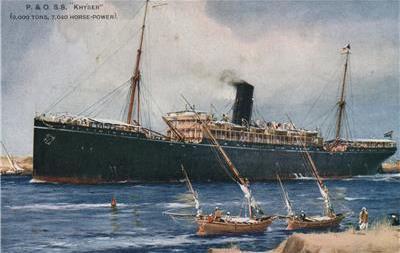
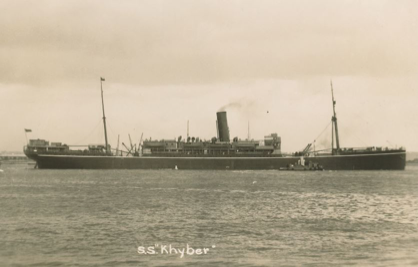
Captain Pinckney died suddenly at Port said on 23 October 1925 while commanding the P & O liner SS Mantau on an outward journey to China and Japan. Capt. Pinckney who was 55 years old had gone ashore and was at a luncheon table when he had a seizure and expired almost immediately. He was very popular with the traveling public and his officers.
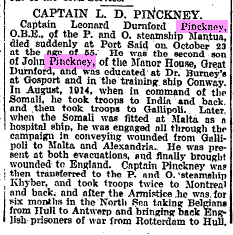
SS Mantua
HMS Mantua was a 20th-century ocean liner and armed merchant cruiser. She was launched in 1909 as a passenger ship. Mantua was outfitted as an armed merchant cruiser in 1914 and served with the Royal Navy during World War I. On a voyage to Freetown in 1918, the passengers and crew of Mantua inadvertently spread the 1918 flu pandemic to Africa.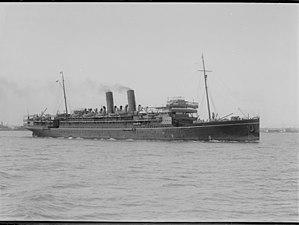
HMS Mantua
0 -
On 14/03/2022 at 18:47, dutch9705 said:
All the blokes I know who were mid in NI have theirs in the London Gazette and I’ve just checked and also searched by army numbers. His number doesn’t return any results. Not conclusive evidence that he wasn’t mid but maybe it has been subsequently added to the group.
Thanks for the info. I appreciate you looking him up.
0



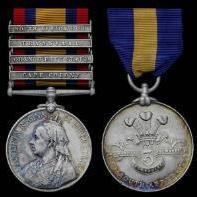
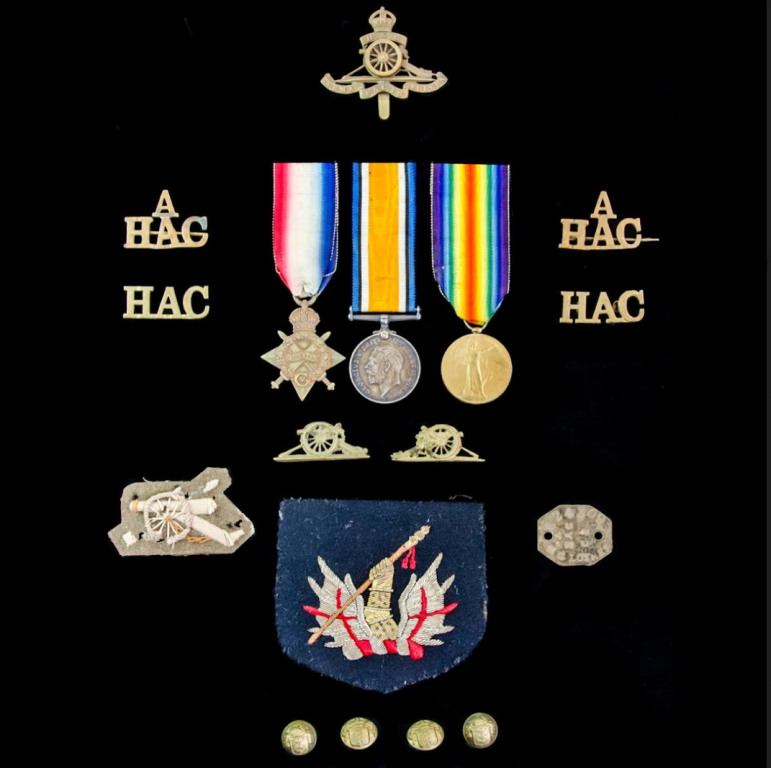
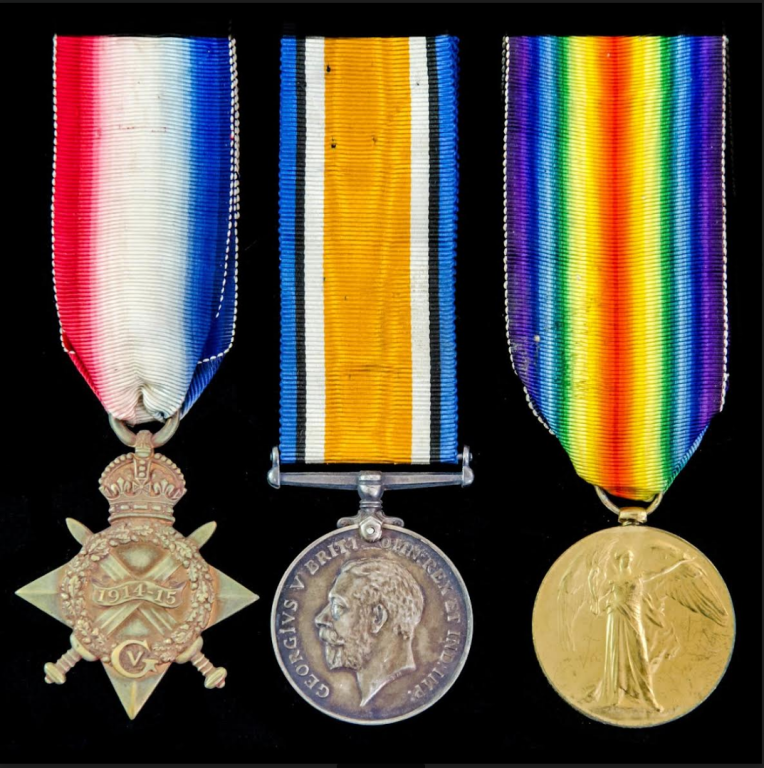

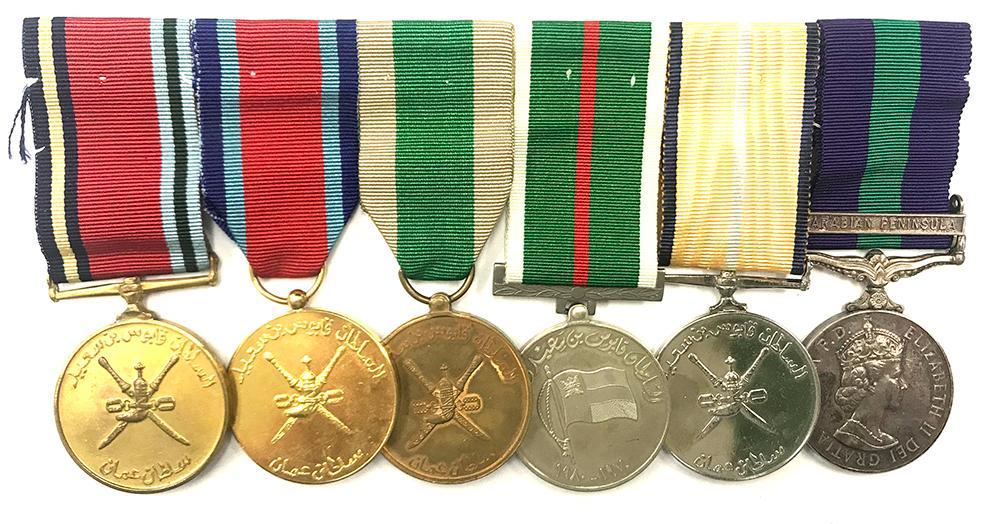
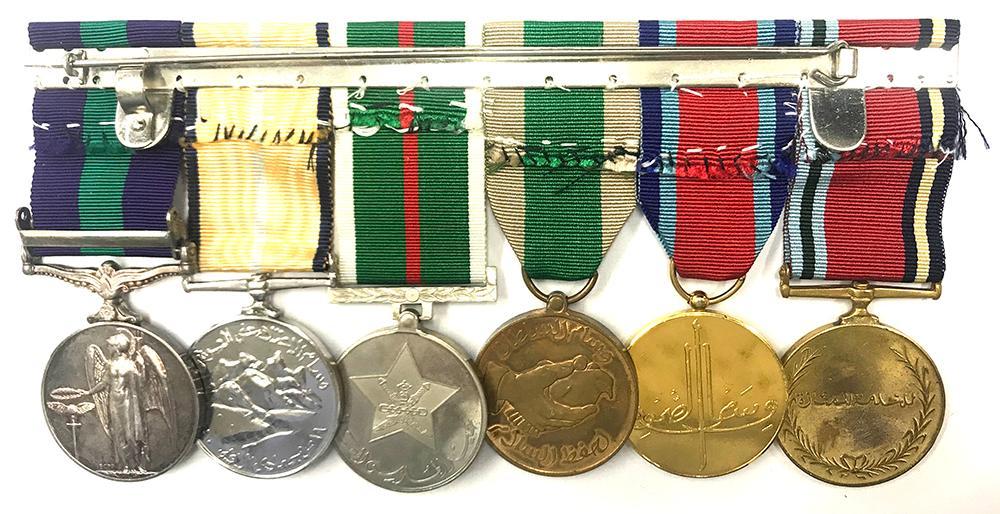
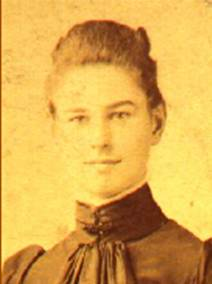
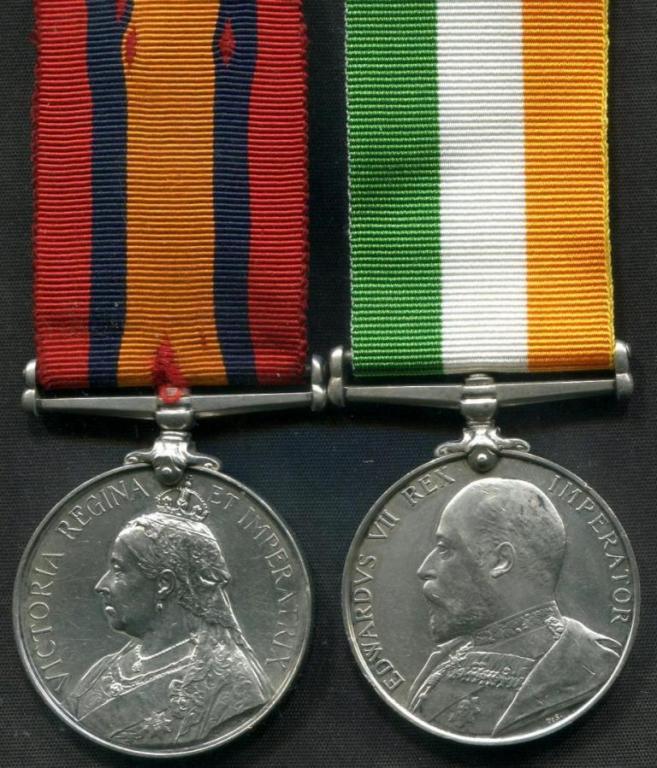



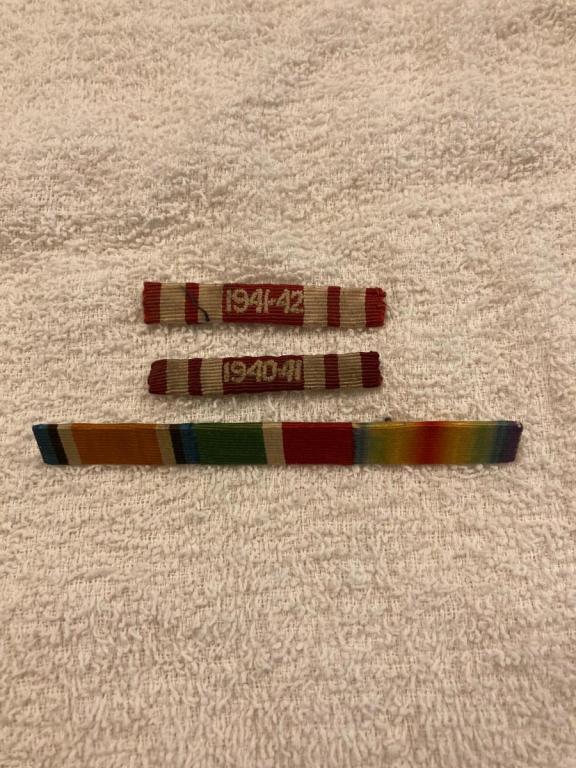
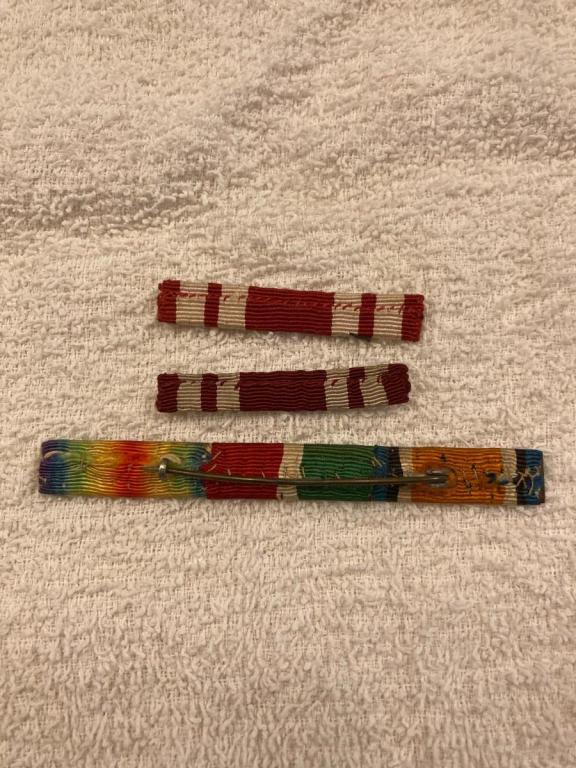
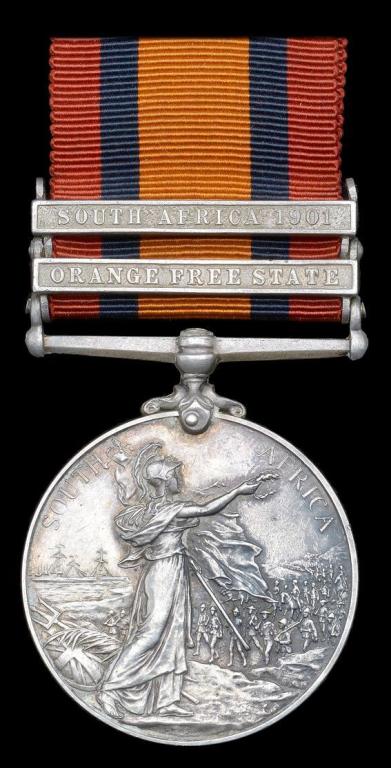
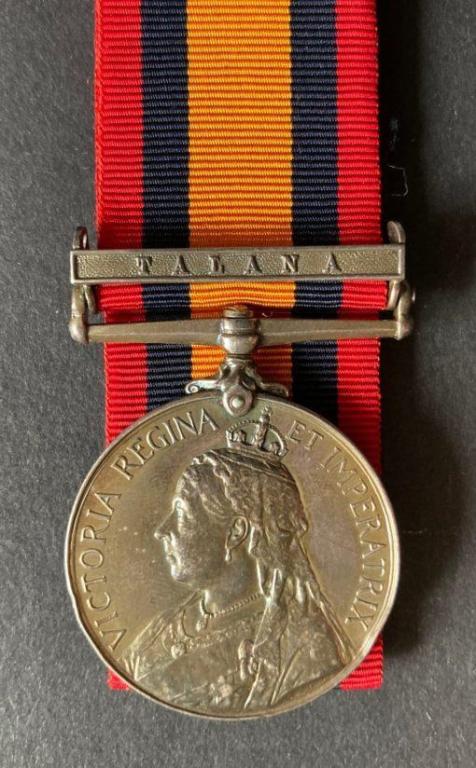

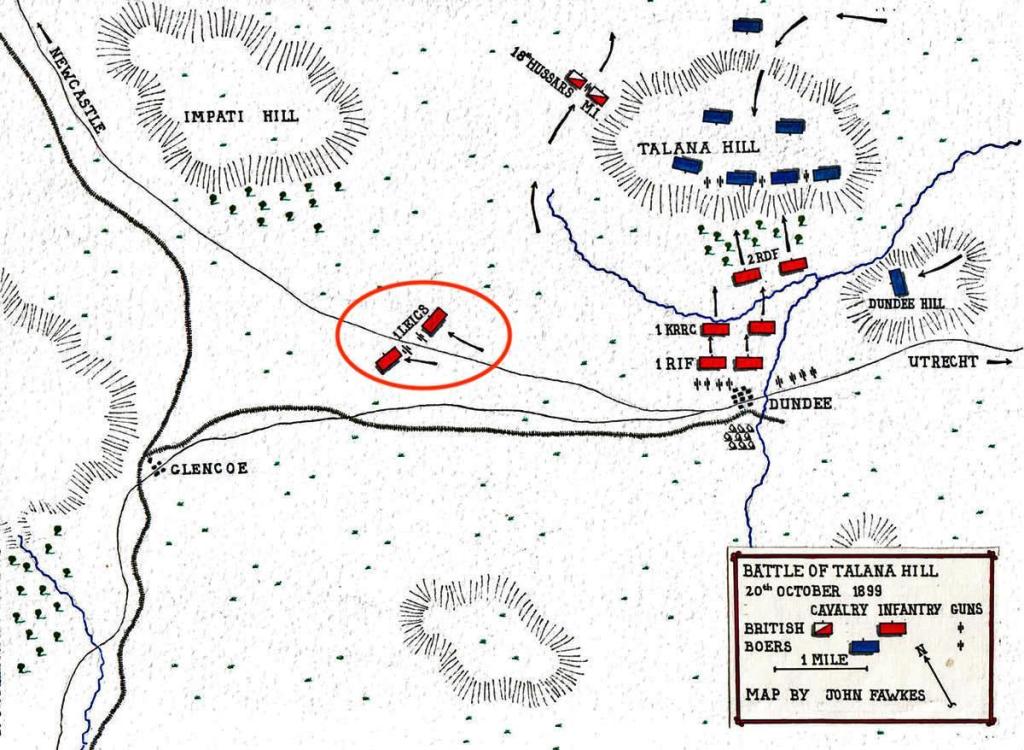
Napoleonic Documents
in France
Posted
This is a marvelous thread and I hope there is more to come. Thanks everyone for posting.